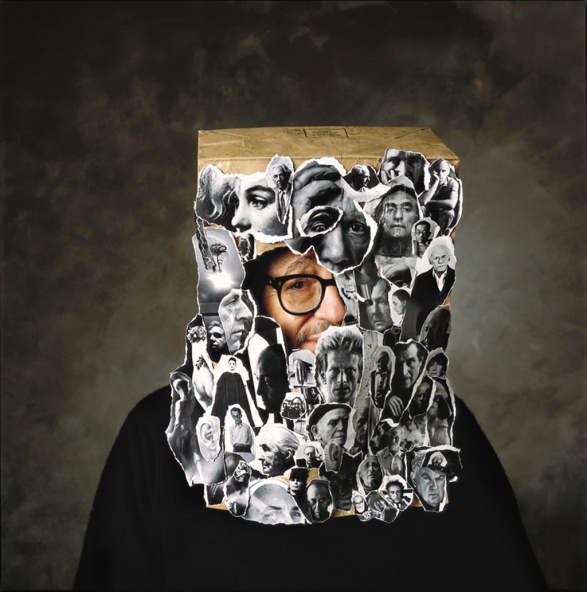 Self-portrait, London, 1972
Self-portrait, London, 1972
Abe Frajndlich was born in 1946 to in Frankfurt. At the age of ten he moved to the United States via Israel, France and Brazil. His role model and mentor was photographer Minor White, from whom he learnt “the art of seeing”.
It is with “hungry eyes”, but also with a tenacity and patience only equaled by Penelope’s firm belief in the return of her husband Odysseus, that over the last 30 years Abe Frajndlich has taken portraits of his famous fellow photographers. A selection of over 100 pictures from the ever growing portrait collection has been published in book form for the first time under the title Penelope’s Hungry Eyes. It features grand old masters of the art and photographic artists, contemporaries of the author and younger masters from the Düsseldorf School.
Abe Frajndlich has succeeded in luring the world’s most famous photographers out from behind their cameras and in front of his. With extraordinary skill, he has trained his lens on people used to hiding their own eyes behind a camera. For each of his portraits (some in color, some black and white) Frajndlich has conceived an individual setup that brings into focus in diverse ways the photographer’s primary organ, namely their eyes, which are as special as the voice of talented singers. Some of the photographers shy away by closing their eyes, wearing a mask or turning away (Cindy Sherman, Annie Leibovitz, Thomas Struth or Hans Namuth). Others use props such as glasses, mirrors or magnifying glasses to set their eyes in scene (Bill Brandt, Duane Michals, Andreas Feininger, Lillian Bassman) and still others draw attention to the vulnerability of their eyes using knives and scissors (Imogen Cunningham, Lucas Samaras). Yet many of the subjects respond to the unfamiliar “change of perspective” by looking directly into Frajndlich’s camera (Candida Höfer, Berenice Abbott, Gordon Parks).
Abe Frajndlich has presented a Who’s Who of recent photographic history, enriched with a highly subtle eye for humorous situations. In images and text (the photographer has added a personal note to each portrait) Frajndlich sets out to discover the ever enigmatic relationship between the real person and their own legend.
 Lucas Samaras
Lucas Samaras
 Bill Brandt
Bill Brandt
 Josef Koudelka
Josef Koudelka
 Arnold Newman
Arnold Newman
 Robert Lebeck
Robert Lebeck
 Imogen Cunningham
Imogen Cunningham
 Elliott Erwitt
Elliott Erwitt
 William Wegman
William Wegman
 Marc Riboud
Marc Riboud
 Ruth Bernhard
Ruth Bernhard
 Lillian Bassman
Lillian Bassman
 Louise Dalh-Wolfe
Louise Dalh-Wolfe
 Ilse Bing
Ilse Bing

 Dennis Hopper
Dennis Hopper
 David Hockney
David Hockney
 Richard Avedon
Richard Avedon
 Annie Leibovitz
Annie Leibovitz

 Cindy Sherman
Cindy Sherman
 Andres Serrano
Andres Serrano
 Harold Edgerton
Harold Edgerton
 Horst P. Horst
Horst P. Horst
 Norman Parkinson
Norman Parkinson
 Gordon Parks
Gordon Parks
 Masahisa Fukase
Masahisa Fukase
 Daidō Moriyama
Daidō Moriyama
 Eikoh Hosoe
Eikoh Hosoe
 Cyrus Alessandro Twombly and his pet posing in front of a large-scale painting by Cy Twombly. Photo: Horst P. Horst, 1966
Cyrus Alessandro Twombly and his pet posing in front of a large-scale painting by Cy Twombly. Photo: Horst P. Horst, 1966





































